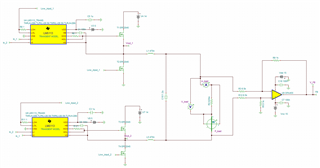Other Parts Discussed in Thread: OPA455, , TLV3501
Hi,
I am designing a class d full bridge amplifier with resistor load of 625m ohm and with feedback by Tina. Everything before the feedback works well. The only thing is that as I change the the resistance of my load, the feedback loop cannot correct the error. And as I change the voltage supply of my MOSFET in the power stage, the load voltage will also be changed. I follow the instruction from TI and other sources to design the circuit, but I do not know why the feedback does not work properly. Could anyone please help me solve this problem or give me some hints. Thank you so much. The schematic and program are attached.
Best,



